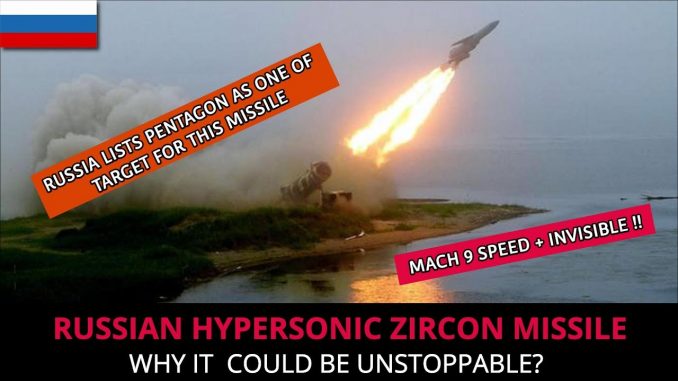
While detailed information is scarce, it is clear that Russia is testing and preparing to deploy its latest high tech weapon, the 3M22 Zircon (Tsirkon) or SS-N-33 (NATO codename) hypersonic cruise missile. Some details of the capabilities of this weapon were announced by Russian President Vladimir Putin back in February 2019 when he stated that the Zircon hypersonic missile has a firing range of over one thousand kilometres, can accelerate to about Mach 9 (i.e. 9 times the speed of sound or 6905 miles per hour compared to 550 miles per hour for a Tomahawk Cruise Missile) and is capable of destroying both sea-going and land-based targets. He also stated that the intended use for the Zircon is to arm sea-going platforms such as surface warships and submarines including those that are equipped with the Caliber cruise missile launching system.
Here is a summary of the Zircon from the Missile Defense Advocacy Alliance (MDAA):
The Zircon's body length is estimated to be 10 to 11 metres, it can be equipped with a warhead weighing between 300 and 400 kilograms and its peak altitude during its trajectory is 30 to 40 kilometres or 100,000 to 130,000 feet.
Here is a graphic showing the Zircon 3M22 that surfaced in a presentation by a Russian defense contractor around 2016:
Let's look at what MDAA has to say about the strategic implications of the Zircon:
"The Zircon missile is strategically valuable due primarily to its speed. In April 2017, it was reported that the Zircon had reached a speed of Mach 8 during a test.[iv] If that information is accurate, the Zircon missile would be the fastest in the world, making it nearly impossible to defend against due to its speed alone. Another valuable aspect of the missile is its plasma cloud. During flight, the missile is completely covered by a plasma cloud that absorbs any rays of radio frequencies and makes the missile invisible to radars. This allows the missile to remain undetected on its way to the target."
Russia's media has also reported that the baseline Zircon missile will be redesigned in a lighter weight version that will allow it to be deployed on strategic bombers, most likely the Tupolev Tu-160/MM2 (aka Blackjack as it's known by NATO). According to TASS, the Russian Navy expects to accept the latest Zircon missile for service and deployment from 2023 as shown here:
As well, by the end of 2019, TASS also reports that the Russian Navy will launch a Zircon missile from a military ship for the first time as shown here:
Here is a video from Defense Updates revealing some additional background on the Zircon hypersonic missile and why it could be unstoppable:
Interestingly, in the December 2018 edition of the Government Accountability Office's National Security Report to Congressional Committees which outlines the long-range emerging threats facing the United States, we find the following comments about the hypersonic weapons that are being developed by both China and Russia:
To fight against this growing threat, the United States Space Development Agency is seeking to deploy up to 1200 low-orbit satellites to monitor and target enemy hypersonic weapons at a cost of more than $11 billion as you can see here.
The growing threat from Russia's rapidly developing hypersonic weapons capabilities is certain to have the Pentagon concerned considering that there is no current defense strategy or technology that can be used to neutralize these high technology weapons. At the very least, it looks like America's military-industrial-intelligence community has its work cut out for it if it hopes to stay ahead of its enemies when it comes to the development and deployment of hypersonic weapons. Fortunately, America's taxpayers are standing by with a blank cheque to fund the entire program.
Click HERE to read more from this author.
You can publish this article on your website as long as you provide a link back to this page.

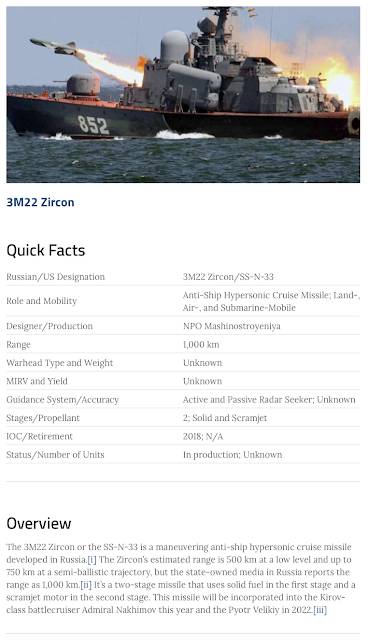
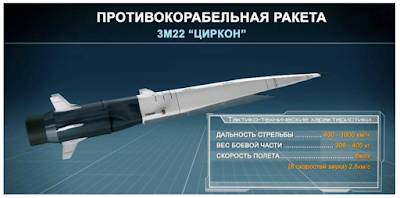
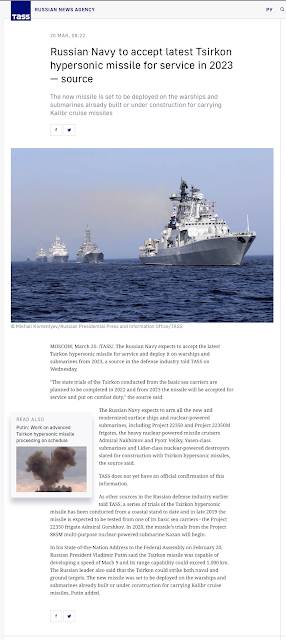
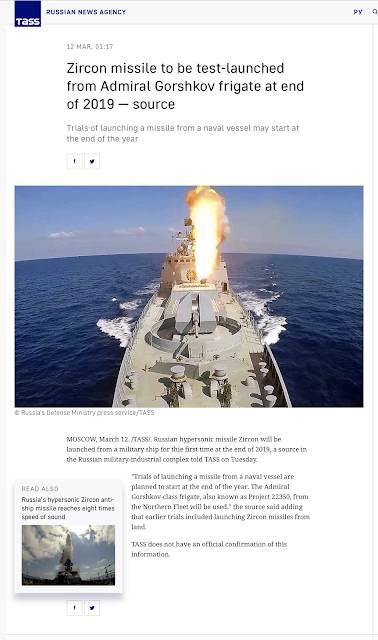

Be the first to comment